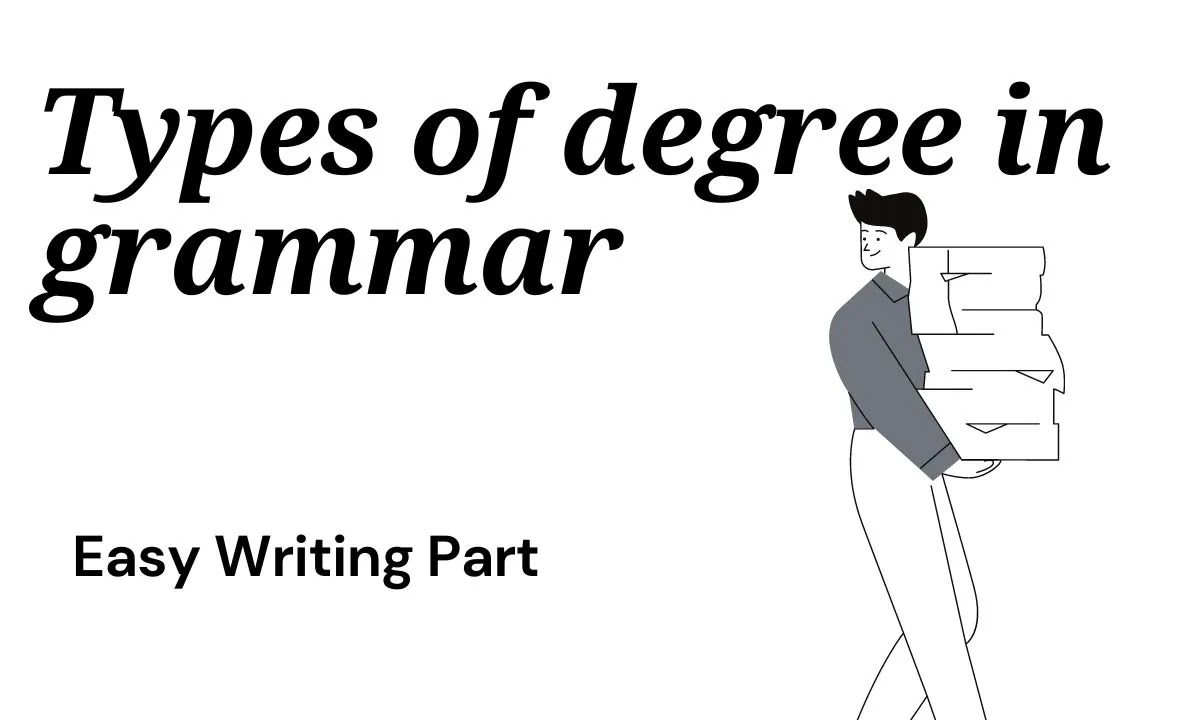What is degree? Types of degree in grammar-Easy Writing Part
DEGREE!
Hello dear students, how are you? Welcome to our site Easy Writing Part. Today we will talk about degrees. What is a degree? What are the types of degrees and what are they and how do we understand which degree?
 |
| Types-of-degree-in-grammar |
》What is degree? Types of degree in grammar
Ans: Degree is the form of adjective. There are mainly three types of degrees. As like-
1. Positive Degree.
2. Comparative Degree.
3. Superlative Degree.
Types of degree in grammar with example
Positive Degree: When comparisons between a person or an object do not make sense, there is a positive degree of adjective. In this case there is no change of adjective. For example-
>He is tall.
>He is strong.
Comparative Degree: When a comparison between two persons or objects means a comparative degree of adjective. Usually a comparative degree is formed by putting 'er' with adjective and then 'than'. For example-
>He is taller than I.
>I am stronger than he.
Superlative Degree: When more than two persons or objects are compared, there is a superlative degree of adjective. Superlative Degree is usually formed by adding 'est' to the adjective and putting 'the' before it and then 'of' or 'in'. For example-
>She is the smallest girl of (or in) the class.
>She is the strongest woman of (or in) the village.
》How to differentiate between degrees.
》Follow these structure to easily understand degrees.
>Positive: No other/Very few+as+positive from+as.
>Comparative: Sub+v+comparative from+than any other/than most other/than all other.
>Superlative: Sub+v+the/one of the+superlative from.
》Some rules of degree formation.
>If there is 'y' at the end of the adjective and if there is a consonant before 'y' then 'y' is replaced by 'i' and then 'er' by adding 'comparative' and 'est' by adding 'superlative'.
Degree of Comparison Examples
Positive Comparative Superlative
Happy happier happiest
Dry drier driest
Sly slier sliest
Easy easier easiest
>If there is 'y' at the end of the adjective and if there is a vowel before 'y', it has to be comparative by adding 'er' and superlative by adding 'est'. For example-
Positive Comparative Superlative
Gay gayer gayest
Fay fayer fayest
>Adjectives with more than one syllable are preceded by 'more' with comparative and 'most' followed by Superlative. For example-
Positive Comparative Superlative
Useful more useful most useful
Honest more honest most honest
>Exception
Positive Comparative Superlative
Good better best
Bad worse worst
Many, much more most
Thanks 😊for read our article and follow our site to get more interesting information about degree.




.png)
